GM Seeks "Contemporary Wagon" For Americans
Unless you pay a visit to Mr. Lang’s lot on the right day or really love Volkswagen, the only wagons available for Americans today are mostly Teutonic, and all come with a high price tag. According to GM North American President Mark Reuss, that’s a problem, and one he’d like to fix pronto.
One German Automaker to Become Lord of the 'Ring, But Who?
Nissan. Cadillac. Chevrolet. All brag about being the Lord of the ‘Ring, upsetting the German automakers to no end. Yet, one of them may still have the last laugh through the act of saving the Nürburgring from certain doom.
The Beat Resurrected: Meet the Honda S660
Honda’s rear-driven products built for two tend to be motorcycles, scooters and ATVs for the most part, but every now and again the company will unveil a roadster whose name begins with an S, and ends with the number of cubic centimeters the engine provides.
Such a car is set to return soon to the showroom floor, and will make its debut at the Tokyo Motor Show in November: The Honda S660.
Petersen Museum Responds To LA Times: "Absolutely Incorrect", "Big Misrepresentation" – Museum Will Not Refocus To Bikes and French Cars
Yesterday, we ran a News Blog post relating the LA Times report that the Petersen Museum was selling off 1/3rd of its collection to focus on motorcycles and French cars from the Art Deco period. Now, the museum has responded with vigorous denials, saying that the newspaper was wrong about what is really planned for the facility. Following our publication of that post, the Petersen’s PR rep reached out to TTAC, offering to share information that they say is more accurate. She called the LA Times story “a pretty big misrepresentation” and supplied us with prepared talking points (below) on the vehicle sales, the museum renovations and a response to the LAT article. In an interview with Jalopnik’s Jason Torchinsky, museum director Terry Karges said that the Times’ headline, “Petersen Automotive Museum Takes A Major Detour” was “absolutely incorrect.” Karges, who is in the motorcycle business and used to race bikes, denied that his own personal interest in motorbikes, or museum Chairman Peter Mullin’s interest in French classics will affect the collection at the Petersen.
BMW Re-Releases 73 Year Old Gearbox
As the owner of a geriatric, but otherwise well maintained car, you know that getting parts can be a bitch. Depending on company policy, ex-factory supply of parts can cease after 12, or, if you are the lucky customer of a more dedicated maker, 15 years after the end of regular production. BMW now goes against that trend and offers parts for a car that went out of style 73 years ago.
Dealing With Loss: My Father's Oldsmobile
My wife with the Oldsmobile at Storm Lake, WA
Nobody likes to think about the passing of a parent. When it happens it leaves you with a lot of different feelings, sadness, emptiness, loneliness and even, if your parent has been effected by a long illness or a prolonged decline, an unexpected sense of relief and completion. The grieving process is different for everyone, the legal process isn’t. Within a few days of your parent’s passing, the division of assets, property and cherished mementos begins to grind relentlessly forward. If your family gets along well, who gets what is generally handled gracefully and your relationships are actually strengthened by the process. So it was with my family and, since I was the only “car guy” among my brothers and sisters, it was a foregone conclusion that I would get my father’s Oldsmobile.
My Role In The Extinction Of The American Muscle Car
1969 Chevelle SS
A few weeks a go I had the opportunity to watch part of the Barrett Jackson auction. I found myself captivated by the colorful commentary that went along with each sale. Every car had a story and the commentators spent a great deal of time telling us about them. They also discussed the cars’ performance, available options and recited the original production numbers, contrasted by telling us exactly how many of those cars survive today. It turns out that many of the cars I regularly used to see back in the 1970s are extremely rare today. I suppose I shouldn’t be surprised, however, after all, I had a hand in making them go away.
Faux Past: Duesenberg Murphy Roadster Replica by AAT – The World's Most Elegant Econoline Van
I stumbled upon this car at the Packard Proving Grounds‘ fall open house.
Of late I’ve been enamored of classic dual cowl phaetons. Forget Lamborghinis, if you want to make a statement, a dual cowl phaeton from the late 1920s or early 1930s is the definition of arriving in style. While getting some photos of a burgundy red Packard phaeton, I noticed that the classic behind the Packard was a Duesenberg, or rather it had a Duesenberg hood ornament. It turns out that it’s a one-off replica of a Duesenberg built for a man who owns a real Duesey.
The Gas Station - Ripe For The Museum?
For the first time, I am worried that gasoline is at the end of its life cycle. Gas pumps already have landed in the museum.
Name That Car: BMW What???
Fake In China: An F150 By Another Name
Remember when Ford dragged Ferrari into the U.S. district court in Detroit, after Ferrari had the nerve to call their new Formula One racer the “F150”? Ford feared massive dilution of their F-150 truck mark and sued. Ferrari relented. Let’s see what Ford will do about this overdose of trademark and design patent infringement:
Return Of Sakura And Fuji: The Dogged Datsuns Run Again
and came home with a trophy? This story has a sequel.
In 1958, two Datsuns, named “Fujii” and “Sakura” entered the Mobilgas Trial, 10,000 miles all around Australia. Surprisingly, “Fuji” won its class title. “Sakura” finished fourth.
Half a century later, the cars were found in a warehouse in Japan.
How To Build A Lexus LFA Supercar - In Seven Not So Easy Steps
Would you like to know how to build one of the world’s fastest (top speed 202 mph) and most agile ( Nordschleife time 7:14.64) supercars? If you want to have a look at how the Lexus LFA is built, then you need to buy one. As part of the ownership experience, you become access to the “LFA Works” at the Motomachi plant in Toyota City, and you can witness how your car is made. At upwards of $375,000 MSRP for the car, this will probably also be one of the world’s most expensive factory tours. Fiscally responsible as we are, Thetruthaboutcars.com brings you a miniature Motomachi. Let the tour begin …
Volkswagen Goes Postal, Develops The Electric "Fridolin" Of The Future
Are you familiar with the Fridolin? If so, hit the jump. If not, here’s the brief version of its history. Unhappy with its adorable but inadequate, two-cylinder Goggomobil Transporters, the German Postal Service approached Volkswagen and Westfalia in the early 60s, looking for a new interpretation of what it was looking for, namely “arbeitspsychologisch optimaler Ausstattung zu einem günstigen Anschaffungspreis.” This is a tough phrase to translate, but essentially it means “equipment optimized for the workplace psychology, at an affordable price,” and in 1963 that’s what the VW-Westalia team delivered. A mixture of Type 1 (Beetle), Type 2 (Bus) and Type 3 (Fastback/Squareback), the Type 147 was first shown to the German Post in 1963, and was quickly nicknamed “Fridolin” (an uncommon German boy’s name) apparently because workers said “it looks like a Fridolin.” Only 6,126 were built between 1964 and 1973, and they continue to enjoy a strong collector’s cachet ( primarily as slammed campers, apparently). And now, Volkswagen wants to re-create the classic… for the future.
"America's Car Museum" Rises In Tacoma
The LeMay Museum in Tacoma, WA won’t be completed until June, but the NY Times reports that it aims to become on of the premiere automotive museums in the country, rivaling collections like the Peterson and Harrah museums. And at 165,000 square feet, the building that is rising in Tacoma needs to be huge: though “only” 750 vehicles will be exhibited at a time when the building is done, the LeMay collection is far larger than that. Although even curator David Madeira isn’t sure how many vehicles actually belong to the collection.
“I don’t know,” Mr. Madeira said recently in an interview at The Times, when asked how many vehicles were in the possession of Harold LeMay, the garbage-disposal magnate whose collection of American automobiles would comprise the majority of the museum’s holdings. Mr. LeMay, who died in 2000, was prone to buying a barn or even a field containing old automobiles just to prevent their contents from landing in a junkyard. “He was not a connoisseur; he was a true collector,” Mr. Madeira said.
Once holding at least 3,500 vehicles, the collection has been cut to “north of a thousand” aimed at representing the sweep of American automotive history. And those will be joined by vehicles from the collection of watchmaker Nicolai Bulgari in order to create an automotive museum that founders hope lives up to the name “America’s Car Museum.” Since it’s right up I-5 from me, I’ll be sure to report on the collection and whether it reaches that lofty goal when it opens to the public next summer.
What's Wrong With This Picture: This Modern Unimog Edition
How much do things change in 60 years? Sometimes the best answer to that kind of question is a picture. Here you can see an original Unimog (right), built sometime between the start of production in 1948 and 1951, when Mercedes bought the operation in order to expand it enough to keep up with demand. On the left is a “60th Anniversary” Unimog design concept, celebrating not the actual birth of the Unimog, but its purchase by Mercedes. Needless to say, the contrast between the two is… breathtaking. And if you’re curious about the evolution of this hugely influential vehicle, if you can’t help wondering how it grew from a (relatively) tiny, spartan utility vehicle to a garish, Mercedes-starred behemoth, be sure to check out Bertel’s illustrated history of the Unimog. It makes you wonder what the next 60 years have in store for vehicles like this… [images courtesy: Autobild]
What's Wrong With This Picture: An Archetype's Progress Edition
"Show Me Your Tatras": An Argument For Automotive Preservation
The question of automotive preservation jogged an unblogged memory loose today, from earlier in this chaotic summer when I was in Wolfsburg, Germany. I was touring the Zeithaus, or “House of Time,” in Volkswagen’s sprawling Autostadt, taking in the remarkably well-curated exhibit of some of the most influential and important cars of all time. Unlike the GM Heritage Center, for example, the Zeithaus is not reserved for VWs alone, but includes fine examples of undeniably iconic cars from various marques. Organizing VW’s official museum in this way gives the brand a sense of sophistication, sending the message that VW knows quality even when it’s not the one producing it. And the Zeithaus’s curators use this well, offering up such flattering (if ultimately apt) comparisons as an Audi A2 poised alongside a Citroen DS.
Are You Ready For: A National Register Of Historic Vehicles?
You may not have heard of the Historical Vehicle Association before, but it’s a 30,000-member advocacy group that actually emerged from a special insurance plan for historic cars offered by Hagerty Insurance. Now ratified by the Fédération Internationale des Véhicules Anciens, the HVA offers commissions on History, Skills and Trades, Technical Issues and Legislative Affairs, as it seeks to fulfill its mission of “Keeping Yesterday’s Vehicles on Tomorrow’s Roads.” One of its more laudable legislative tasks of late has been raising awareness about the damage caused by ethanol-blended gasoline and seeking to ban mandatory blending. But now it’s got another goal, as reported by Automotive News [sub]
The federal government has national registries for historic buildings, boats, airplanes, railways — you name it. But not for cars. And the Historic Vehicle Association is trying to change that…
A concern among enthusiasts is that government initiatives — such as the 2009 federal cash-for-clunkers incentive — could send many vintage cars to the crusher. Legislation might prevent cars from being destroyed. Or it could allow gas guzzlers to remain on the road if other laws preclude them.
As it so happens, my significant other is an Architectural Historian who spends her days evaluating buildings that could be impacted by federally-funded projects… so I hear about this issue (in terms of the Register of Historic Places) more often than you can even imagine. And it’s not as simple as it might seem…
Cars Only Bob Lutz Remembers: The Dodge Dakota Convertible
Welcome to Bob Lutz week at TTAC! I spent several hours recently with the auto industry’s most notorious executive, and elements of that interview will be the basis for much of my writing this week. We’ll also be capping the whole thing off by voting on the 2010-2011 Lutzie award for most unfortunate quote by an auto exec. And rather than jumping right into the meat of the interview, I want to kick off Lutz week by looking at a few cars that came up in our meandering conversation. After all, these are not just vehicles… when Lutz brings them up in an interview, they become stories, little encapsulations of his philosophy or the state of the company that made them. Let’s start with a car that I literally had never heard of before he mentioned it almost in passing: the Dodge Dakota Convertible. Eat your heart out, Murano CrossCabriolet… the Dakota was the original “WTF-vertible.”
What Isn't Wrong With This Picture: The Last Of The Panther Interceptors Edition
Panther lovers will be sad to hear that this, the last of the black-and-white Crown Vic Interceptors, has gone down the line according to the Ford St Thomas Assembly Plant’s Facebook page. The last Panther ( reportedly a Town Car) is scheduled to be built on Monday, and the plant’s “about 1,500” workers will be laid off on the 12th of September. If you know someone who loves the Panther chassis, please be sensitive to their needs in this difficult time. Remind them that there’s always the used market, and that someday their beloved brutes will tear ass across a post-apocalyptic landscape, and be known as “ the last of the V8 Interceptors.” This is going to be OK…
What's Wrong With This Picture: A Panda For Every Purse And Purpose Edition
Meet the new Fiat Panda, which is set to debut at the Frankfurt Auto Show. The ur-Panda, nicknamed the “tolle kiste” (crazy/cool box) for its Giugiaro-designed looks and available Puch-designed 4×4 system, was built with only evolutionary changes from 1980 to 2003. Not a bad accomplishment for what was supposed to be a “peasant’s car.” The new (3rd Gen) Panda, based on the Fiat 500/Ford Ka platform, has an even tougher task ahead of it: not only must it pick up sales for Fiat in Europe, but it must also form the basis of Dodge and Jeep B-segment models, aimed at the US market. Is it up to the task?
Are You Ready For: A Porsche Flat-Eight?
Well, are ya… punk? As part of its “why does Ferrari get all of the €250,000-€750,000 fun” fit of pique, Porsche says its considering a flat-eight engined beast to take on the Italian foe. Autocar reports that
Porsche engineers have long been frustrated by the fact that the company’s iconic flat-six engine cannot be extended much beyond 4.0-litres. It’s also felt that in the Ferrari-dominated market, eight cylinders are a pre-requisite.
Moving to a larger engine would also differentiate the new model from the new 911 and next-generation Cayman range. It’s thought that the creation of such an engine has been made easier by the engineering working currently being done on the new turbocharged flat-four engine, which will be offered in Porsche’s planned entry-level roadster. This all-new motor is thought to be modular, allowing it to be extended into the next-generation flat-6 and a flat-8.
Live From Pebble Beach: The Show Goes On
In the interests of timeliness, we’ve been posting press shots of the latest unveils from Pebble Beach as they happen, but our man on the ground, Alex Dykes, is updating us with his own photos and commentary as well. In his latest update: live shots of the Cadillac Ciel, a 1931 ‘llac, the last of the four-cylinder Lotus Exiges, a $52k Rolls-Royce-trimmed MINI, a Spyker and the Landie Evoque. Ladies and Gentlemen, welcome to Pebble Beach.
VW's Secret Weapon: Heritage
With the world’s established automakers facing increased competition from ascendant Korean car brands, and with even more competition from Chinese automakers just over the horizon, the key to continued success is leveraging every single advantage that’s been accumulated in the past. Traditionally those advantages have been technical, whether in engine technology, suspension set-up know-how, or long-established relationships with suppliers. But as technical advantages fade, brands are having to cash in on their other, less tangible assets… including heritage.
Trekka: Skoda Meets Land Rover In New Zealand
Each weekend, TTAC turns its attention to some of the more obscure news and stories from around the world, taking you from Jakarta to Haiti to Monaco… and now to New Zealand. Hungarian Skoda blog stipstop.com takes us to New Zealand in 1966, when Auckland-based Motor Lines were able to adapt a Jowett Bradford-based utility vehicle made by Kawerau into a Skoda Octavia-based Land Rover lookalike… and the Trekka was born! Only 2,500 of the little runabouts were made in steel-paneled wagon and “ute” bodystyles (specs here), of which five served duty in Vietnam and one was purchased for unknown reasons by General Motors, which shipped it to Detroit in 1969. The Trekka was an “icon of the Kiwi can-do spirit” by the time it went out of production in 1973, and it was much loved in New Zealand, although it was never as capable as its Landie-alike bodywork suggested (a limited-slip differential was eventually developed for it). But the low-cost Trekka (it cost £895, less than a Morris 1100) was ultimately a product of New Zealand’s import tariffs, and as these began to fall in the 1970s, the Trekka’s day had passed. Today, fewer than 30 remaining models have been documented by trekka.co.nz.
"Ask Amy": Why The Morris Minor?
“Ask Amy” advice columnist and self-help memoir author Amy Dickinson has the late Ann Landers’ old slot on the Chicago Tribune. She also has a 1967 Morris Minor. She fell in love with the car the first time she saw one, soon after she moved to London with her then-husband, in 1986. “They are so cute, they look like ice cream cones,” she says. She loves the clatter of its engine, and the way people smile when she drives by, and she says it is her favorite material object in the world.
So after her husband embarked on an open-endedly extended business trip, in 1988, Dickinson, then a housewife, took her five week old baby, Emily, in a taxi to a dealer who restored Morrises, and made her purchase, for 1,500 pounds (roughly $5,000 in current dollars). “One advantage of driving a beautiful, quirky vintage car is that it really helped me meet people,” she says. “So many men said to me, ‘I had one of these,’ and ‘my dad had one of these,’ not to mention ‘getting rid of my Morris Minor was my biggest mistake.’”
I, BMW
After A Whole Lada Production, A Russian Classic Retires
Surf over to www.lada.ru, and click on “Автомобили” (automobiles), and you’ll find four model lines: Priora, Kalina, Samara and the classic, Putin-favored 4×4. Not pictured in the lineup, but still present in a sidebar on the site, is a link for one more model: the 2107. The first 2107 (then called the 2101), was built in April, 1970, developed off the internals of the Fiat 124, which itself was already four years old. And ever since 1970, the 2101 “Classic” has been rolling off an assembly line in Tolyatti, providing over 16.8 million sets of cheap wheels (MSRP: about $7,500)… and the model accounts for two-thirds of all Ladas ever built. But, reports Automotive News Europe [sub]’s Luca Ciferri:
The Classic was scheduled to die at the end of 2009 when sales began fading, but the Russian government scrappage program introduced in March 2010 gave it a new lease of life. Helped by the incentive, Classic sales last year doubled to 136,006, making it Russia best-selling car by far. In the first half of this year, sales grew 35 percent to 69,500.
But the scrapping program ended in May, heralding the end for the Classic.
The Lada Classic will be replaced by the Lada Granta, which was launched inauspiciously, when, in a scene straight from “Borat,” the car refused to start for President Vladimir Putin. But perhaps, if the Granta is built for another 40 years, car writers will be looking back fondly at it someday.
Like Cats And Dogs: An Exploration Of Automotive Mascots & Intellectual Property
China doesn’t have the world’s best reputation for respecting intellectual property (pdf). TTAC’s own old China hand Bertel might give us an on-the-ground report that could differ with the reputation, but reputations are still what they are. We’ve seen knockoffs of MINIs and smart cars (do you think that smart could borrow a capital letter from MINI?), and of course there is the notorious Chery QQ’s take on the Daewoo Matiz/Chevrolet Spark. GM was already not thrilled with “Chery” being one letter removed from “Chevy”, but the QQ was kinda overt so GM was understandably upset. Bertel can correct me if I’m wrong but I believe that Chery prevailed in both the Chinese court system and in the Chinese marketplace (apparently by offering more features/value).
Look At What I Found!: My Continental Summer
Jack Baruth called the 1976 Cadillac Fleetwood Sixty Special Talisman that he delivered to Sajeev’s brother “majestic”. While Jack and Sajeev have been playing with a big Caddy, lately I’ve been seeing a lot of Dearborn’s favorite luxury brand and it’s given me a lot of opportunity to think about Lincoln’s past and future. Today, Cadillac, buoyed by the success of the CTS and its variants, along with profitable sales of the SRX (and Escalade too) seems strong compared to Lincoln. As has been the case since Henry Leland’s day Lincoln has almost always been Detroit’s weaker sister when it’s come to luxury cars. Almost always…
Is Toyota Losing the Market for "Technicals" to China?
You’ve seen them before, photos from some godforsaken place of insurgent warfare. A half dozen rag tag soldiers, if you can call them soldiers, bristling with Chinese Kalishnikov knockoffs, piled into a Toyota Hilux with a heavy machine gun or some other armament like a recoil-less rifle or ack-ack gun mounted on the roof or in the bed. The Toyota Hilux has been the choice of low level combatants around the world since the 1960s. As noted by China Car Times, when Muammar Gaddafi (is there a world leader whose names, first and last, are spelled in so many different ways?) had one of his snit fits and invaded Chad in 1987 to overturn the government, both sides used so many Hiluxes that Time magazine dubbed it the Toyota War. In the early 90s, the war in Somalia brought us the term “technical”, interestingly enough derived from the NGO practice of hiring local gunmen to protect their employees, and paying them with funds earmarked as “technical assitance grants”.
The Price Of Freedom: Cuban Classic Cars Endangered
Aren’t we all for freedom and democracy? Sure we are. But everything in moderation. And this is really getting too far: Cuba plans to lift a ban on the buying and selling of cars registered after the 1959 Revolution, Reuters reports.
Look At What I Found!: 1956 Continental Mark II Convertible by Hess & Eisenhardt
You can divide collectors into two main groups, generalists and specialists. In my taxonomy Barney Pollard and the Sultan of Brunei would be generalists and Joe Bortz would be a specialist. Some people collect Chevys. Others collect just “tri-five” mid 1950s Chevrolets. Of course for every specialty there’s a subspecialty, so some people collect only ’57 two-door Chevy pillarless hardtops with fuel injection and factory two tone paint.
Barry Wolk is a specialist. He collects Continentals. There’s his big black 1977 Lincoln Continental Town Car along with his 1956 Chris Craft Continental wood boat. He’s even got a Porsche Continental. In the mid 1950s, importer Max Hoffman convinced the headquarters in Stuttgart that Americans bought cars with names, not numbers, and the 356A with the 1500cc engine was briefly marketed in the US in 1955 and 1956 as the Continental. Ford, having established prior use for that model name in the late 1930s, complained and Porsche changed the badging from “Continental” to “European” before reverting to alphanumerics. One reason why Ford was concerned is that in 1955 they were about to relaunch the Continental brand with the Continental Mark II. Barry has one of those Continentals too, but as you might expect from a specialist collector, Wolk has a very unique Mark II, a Mark II convertible. Even more unique than that, it’s one of only two Mark IIs made into convertibles by Ford Motor Company.
Bring Out Your Dead: HearseCon Decay-'N-Shine 2011
Did you know that Colorado has more hearse enthusiasts than any other region in America? Neither did I, until I checked out HearseCon 2011, which took place a few miles from Chez Murilee last weekend. Hearses, ambulances, and flower cars! Coffins, goths, rodders, and— of course— Hearse Girls!
Good Night Sweet Six-Seat Sedan
The Freep’s Mark Phelan identifies yet another vanishing automotive phenomenon: the six-seater sedan. He notes
The Chevrolet Impala is the only six-person sedan you can buy. Other sedans — regardless of how big they are — have front bucket seats rather than the three-person front bench seat that was once common…
Chevrolet is weighing whether to build a six-seat version of the next Impala. Weighing against it, the car will probably be narrower than the current model. It’s based on GM’s Epsilon II global platform. It’s roomy, but probably not enough to fit three comfortably across up front.
About a quarter of Impalas sold last year were six-seaters…It probably makes sense for Chevrolet to concentrate on giving the next Impala a comfortable and attractive front seat that appeals to the other 75% of its buyers and wins some new customers.
I’m sure that front benches bring back a host of memories for TTAC’s Best and Brightest (mine is of grabbing the Hurst floor shifter in my dad’s 1966 F-100 with both hands and clunking from gear to gear on the way to the dump), and yet somehow I’m guessing that not many will agitate for its return. Like tape decks and carburetor tune-ups, the nostalgia of sitting between two other people in front seat might have a certain appeal in reminiscences, but anyone who actually transports six people regularly these days just buys a crossover. And guess what: the kids might be robbed of valuable future nostalgia (replaced by reruns of Spongebob Squarepants on the rear-seat entertainment system), but neither they nor their parents are likely to choose to go back. And so, we march onward, into an unfamiliar future…
What's Wrong With This Picture: XKEvolution Edition
The idea of a “spiritual successor to the E-Type,” has been around since the XJ-S turned out to be anything but, and since 1997 we’ve been tormented with lust-worthy visions of small-roadster loveliness like the XK180 and F-Type concepts. Beyond the realm of ideas, however, the neo-XKE has had a tougher time of things. Jaguar has threatened several times to produce a version of its stunning concepts, but each time the rumors have ended in disappointment. But now Autocar has caught the first physical evidence that a new “E-Type” is actually crossing over into the realm of reality, with these first shots of a test mule.
What's Wrong With This Picture: The Automotive "Farb" Edition
Serious Civil War reenactors have a term for folks who don’t measure up to those activists’ high standards for authenticity. They call them “farbs”, as in “far be it from me to criticize another enactor but if they want to be authentic they should be wearing hand stitched woolen underwear that hasn’t been changed or washed for two months, not BVDs”. Every hobby has its one-uppers. One of the things that I like about car culture is that it’s a mosaic of subcultures. Diversity can be a good thing and I’m a big tent car enthusiast. You may be a trackday fiend who would never slam a lowrider or restore a Messerchmitt microcar, but you can appreciate the folks who would and you can find common ground with them in your shared love of things automotive. Still, none of us like folks who put on airs. Every hobby, though, has its snobs.
We all love our cars and can bore even other car guys with minutia about our favorite marques and models, but at a car show with prewar Packards, don’t you think that it’s a bit pretentious to put “historical’ license plates on a Chrysler K-car?
What's Wrong With This Picture: The Horror… The Horror… Edition
Panther lovers, look away! The Detroit News has picked up a story on Bayliff Custom Automotive which… well, let’s just let the words take over where that unforgettable image leaves off, shall we?
“We’ve been custom-building Packard automobiles since 1978,” said [C. Budd] Bayliff, whose Bayliff Custom Automotive of Lima, Ohio, builds old-style Packards (and other cars) from the ground up and offers Packard-inspired customization styling kits for contemporary vehicles.
Bayliff Custom Automotive also does conversion work for another Ohio-based company that specializes in funeral vehicles.
The Packard kit, as shown here on a Ford Crown Victoria, is priced from $15,000 to $18,500 and includes a Packard-style grille and overhood, headlamps, rear fender skirts, an oval rear window, stylized trunk lid, custom two-tone paint, and various changes to the interior.
If that’s a Packard, I’m Enzo Ferrari. Oh, and I have a lovely original 250 GTO to sell you…
Near-Production FT-86 Rubs Shoulders With Supra [Video]
SB Medien may call the forthcoming FT-86 a “Celica replacement,” but in this first video of the latest near-production prototype, the budget rear-drive coupe nearly runs into a Supra which apparently belongs to the development team. The Supra shows up once more in the video’s ‘ring testing footage (about 1:55 in), suggesting again that it’s somehow involved in the testing or benchmarking process. How and why? Your speculation is as good as mine…
Look Out Lotus: McLaren Prepares Hypercar Flagship
Look At What I Found!: Packards Return to the Packard Proving Grounds Test Track – W/ Video
We’ve all seen too many pictures and videos of the magnificent ruin that was once the Packard plant on Detroit’s east side. It turns out that there’s a Packard site in the Detroit area that’s not a ruin, the Packard Proving Grounds in Shelby Twp. about 15 miles north of Eight Mile Road. Like the Packard plant on East Grand Blvd, Albert Kahn designed all the original Packard buildings on the proving grounds site, including a tudorish looking lodge where the facility’s manager and his family lived. It may be the only place where Kahn designed both residential and industrial buildings. It was built in 1927 at a cost of over a million dollars. Packard used the facility to develop and test their cars, aviation engines (there was a small airfield inside the big oval track – Charles Lindbergh visited the site), and also for publicity and marketing. The proving grounds even had a role in the Arsenal of Democracy. Chrysler used the facility during WWII to test Sherman tanks, erecting a building used to service the tanks that were tested inside the paved oval.
Additional video after the jump.
One Man's Dream Comes True: Jaguar Supercar Approved
Within weeks of becoming Editor-in-Chief here at TTAC (and through a truly unexpected twist of fate), I was given the opportunity to interview Jaguar’s head of Design, Ian Callum on the occasion of my first-ever visit to Detroit. True to our industry-centric mission, I was in town for Chrysler’s Five Year Business Plan, and to be perfectly honest, I struggled with the challenge of interviewing a chief designer, especially one who had recently rejuvenated the aesthetics of such a storied brand.
As I was fumbling through our breakfast interview, we were joined by a GM executive who happened to live at the hotel where Mr Callum was staying, and when I got the most unexpected answer of the interview, it’s safe to say this exec jumped as high out of his seat as I did. I had asked Callum what his favorite new car was, and to my complete surprise he answered “Chevrolet Stingray Concept.” That answer actually played a surprisingly important role in my subsequent career, as it earned Mr Callum and myself an invitation to GM’s Heritage Center (once we had scraped the GM exec’s jaw off the floor), where we spent three hours wandering around and taking in the best of GM’s glorious past.
Good Night, Sweet G-Wagen
No, the G-Wagen isn’t gone for good… but let’s face it, we all know nothing lasts forever. Having been built with only one major technical change since 1979, the G-Wagen’s inevitable ride into the sunset is beginning with the end of production for the short-wheelbase, two-door version that we’ve never (officially) received here in the US. A complete shutdown of Graz, Austria production has been whispered about since (at least) 2005, when Mercedes nearly stopped shipping Gs to the US (according to Wikipedia, only an order from the US Marines [ Devil Dog G-Wagens FTW!] stopped Mercedes from cutting America off from the G-loving). But, according to Auto Motor und Sport, the convertible and four-door versions will continue to be built… for the moment. Think of this as an opportunity for a bit of proactive mourning….
Look At What I Found!: 1903 Columbus Electric – Charging Forward Into the Past
1903 Columbus Electric Model 1000 on display at the 2011 SAE World Congress. From the collection of Peter Fawcett.
Photos courtesy of Cars In Depth
The theme of this year’s SAE World Congress was “Charging Forward Together”. In case you haven’t noticed the electrification of the automobile industry, to make the phrase even more obvious the logo includes an electric plug. Keeping with that theme the automotive engineers’ professional association put a couple of early electric cars on display, a 1915 Detroit Electric and a 1903 Columbus Electric.
Retro Versus Anti-Retro: A Case Study
Recently, our man in Brazil has been confessing his love for Citroen’s “anti-retro” DS series, sparking a debate over what qualifies as “retro” and what qualifies as “anti-retro.” Here, to help draw the distinction are two separate interpretations of an iconic vehicle. On the left is Geely’s EnglonSC7-RV concept, which gives a tackily Chinese take on the classic British taxi. On the right is VW’s Up! London Taxi concept, which takes the same inspiration and packages it in a far more sleek, modern style. As a result, the Englon looks like a doughy, anglophile PT Cruiser, while the VW looks sharp, crisp and yet classic. When it comes to interpreting modern classics, its seems that capturing the spirit of a car is more important than faithfully recreating its cues.
Capsule Review: 1980 Mercedes 450 SLC 5.0
The Mercedes-Benz 450 SLC 5.0 isn’t a dream car, because it’s obscurity and touring car blueprint is a relative buzzkill. But this Bauhaus-worthy super coupe is a homologated racer much like it’s 300 SL forefather. I’ll skip the basics to focus on unit #1576: a grey market import from a USAF officer stationed in Germany. The current owner, Leif Skare, let me drive this meticulously kept, nearly stock (period correct 15” wheels and AMG front spoiler aside) SLC 5.0 before it heads back to Europe. Perhaps the SLC 5.0 is a dream car, when viewed in the right light. In the right place.
Look At What I Found!: 1948 Packard Eight – Ask The Man Who Owns One
You never know what you’re going to see. I’ve been trying to get in the habit of taking the camera bag for my 3D rigs with me when I go out and about so that I don’t miss capturing the neat old vehicles that I happen across. Just last week there was an impossible-not-to-notice canary yellow 1972 Lincoln Continental that shoulda woulda coulda been posted here but the cameras were at home. So when I walked out of Durst Lumber after picking up a tripod nut for my video rig and saw a very clean, very black Buick Grand National, I was glad that I had the cameras in hand. That’s when I realized that as unique as the Grand National was in its malaise era day and as cool as it is today, there was something far more worthy of note just a few parking spaces away.
This originally equipped 1948 Packard Eight survivor is on only its third owner and has just 40,000 miles on the clock. Other than the tires, fluids, filters, belts and hoses, everything is original – nothing’s been rebuilt. All it takes is a walk around the stately exterior and a peak into the elegantly appointed interior and it’s easy to understand that while Cadillac may have been the standard of the world, Packard was America’s ultimate aspirational car. Packards were what truly wealthy people drove.
Will Cuba's Reforms Mean An End To Its Unique Automotive Landscape?
Under current Cuban law, only cars built before the 1959 revolution can be legally bought and sold. This has kept Cuba’s pre-revolution American cars running, creating the island nation’s unique automotive landscape. But now, reports NPR, proposed liberalizations of Cuba’s property laws might threaten Cuba’s fleet of classic American cars. Though reforms could bring much-needed investment to Cuba, they would also mean an end to the laws that have kept Cuba’s streets looking like a time capsule from the late 1950s. But luckily Cubans have come to feel deeply attached to their classic American cars, vowing to keep them running as symbols of Cuba’s history.
As for Cuba’s classic cars, mechanic Jorge Prats says he thinks they’ll be around for at least another 50 years.
“These cars are a part of our national identity now, like rice and beans, or roast pork,” Prats says as he shows off his two-toned, bright red-and-white 1955 Chevrolet Bel Air coupe. “We take care of these old American cars as if they were another member of the family.”
European Wagons Go (Out)Back To Crossover Roots
The modern Crossover family tree can be traced (aesthetically, anyway) back to three basic roots: the “light SUV” (Jeep Cherokee, Toyota 4Runner), the “pure crossover” (Lexus RX300 and endless copies) and the “jacked up AWD wagon” (Outback, Volvo Cross Country). In fact, one might even posit a Hegelian dialectic to explain the evolution from:
Light SUV (thesis) -> “jacked up AWD wagon” (antithesis)-> “pure crossover” (synthesis)
Well, leave it to Europe to screw up a perfectly good theoretical construct. It seems that the continent that gave us dialectics is going back to what was always the most interesting branch of the crossover family, the “jacked up AWD wagon.” Volkswagen seems to be responsible for a lot of the re-exploration of Subaru’s now-nearly-abandoned niche, with a CrossPassat coming to European markets next year, a possible “Skoda Superb Scout” being weighed as well, and an Audi A4 Allroad already on sale. But perhaps the most intriguing of this new class of neo-Outbacks comes from Peugeot, which is testing a leggy 508 diesel hybrid wagon that drives its rear wheels solely by electric power.
Curbside Classic "Find Of The Year" Packard For Sale
It’s one thing to find a car featured on Curbside Classics for sale on Craigslist or Ebay… in fact, according to our trackbacks, a number of used car sellers have even taken to linking to the relevant CC in their online ads. But finding a beast of a Packard Clipper that Paul Niedermeyer himself once called “the biggest find of the year so far” for sale for the low, low price of $4,700 (as of current bidding) just doesn’t happen every day. If you’re on the West Coast and you’re looking to scratch that hard-to-reach Packard itch, your barge may just have come in (so to speak).
VW Counting Its Un-Hatched (Porsche-Powered) Alfas
Volkswagen’s long flirtation with Fiat’s Alfa Romeo brand has hit a few obstacles recently, as Fiat CEO Sergio Marchionne has been adamant that he won’t sell its money-losing brand to his European rival, saying
As long as I am CEO of Chrysler and Fiat, Mr [Ferdinand] Piech will never have Alfa Romeo. It’s hands-off. I told him. I will call him and I will email him. I’m not the one who bought Seat. He’s the one who bought it. I don’t know if he can [fix it], but he needs to try.
Which, as Bertel has pointed out, is a harsh burn: after all, VW may not be “winning the future” with its “Spanish Pontiac,” but at least it rescued SEAT from a struggling Fiat in the early 1980s. And now Herr Piech doesn’t want to take no for an answer, telling Autocar that it would fix Alfa up quick-smart. How? The same way VW might sex up its Audi brand: by using Porsche engines. Yes, really…
What's Wrong With This Picture: If You Love Something, Let It Go Edition
Lancia Thema: Imported From… History?
Bulli For You: VW To Build Microvan
Down On The Slopes: Thiokol Spryte (From The Shining?)
Between recent reviews of a Can-Am Spyder, the Ski-Doo MXZ and the Goodyear Blimp, a certain TTAC writer has succeeded in shaking off this site’s usual monastic dedication to the world of four-wheeled passenger vehicles. And since this particular writer is too talented to fire (well, for mere distraction, anyway), I’d just like to remind the TTAC family that this website is, and always will be, about cars… unless we find something really cool, like this mid-to-late 60s Thiokol Spryte Snowcat. Then we’ll save it for the traditional rule-breaking period: the weekend.
What Is A "Global Mustang" Anyway?
When Americans travel abroad, they might catch the odd glimpse of a Ford Mustang. If they’re especially lucky, they might even find a classic in Paris. But if there’s a car left on the market that exemplifies the values that once defined American cars, it’s the Mustang. After all, the Mustang was not only born in the US, it became more than a car because of the way it tapped so deftly into the American psyche. Developed for American tastes, the Mustang has done best when it clings to the simplicity of the formula that made it an icon. Which is why it’s a bit puzzling to hear Ford telling Automotive News [sub] that the next Mustang will be designed based on styling themes from Ford’s global design studios, rather than the US-based team that has always taken the lead on Mustang design.
How Is This A Saab?
Saab’s PhoeniX concept has two very different purposes: Saab’s Chief Designer Jason Castriota claims the point of the concept was to create buzz and draw attention to the fact that Saab is still around, but it also provides the first look at a new platform that will underpin future iterations of the 9-5, 9-3 and 9-4X. Saab’s Jan-Åke Jonsson tells What Car? that flexibility is key to the new platform, and that “though expensive” it will ultimately save Saab money, saying
We will be able to use the same powertrains in all our vehicles and build them in the same plant (Trollhattan in Sweden), so there are lots of benefits
Which makes you wonder where the money is coming from to develop an all-new, flexible platform. But the PhoeniX Concept also forces you to ask another question: how exactly is this thing a Saab, anyway? At least that’s what former BMW designer Chris Bangle wondered. Hit the jump to see Bangle tussle over the issue with Castriota [courtesy: CarDesignNews], before the Saab designer goes over the Phoenix’s design and place in Saab’s future.
VW Microbus Fans, Your Wait Is Over
50 Years Typ 34: A Short History Of The Large Karmann
Back in the late 50s, Wilhelm Karmann had the inside track in Wolfsburg. His Osnabrück company built the Beetle convertible and the Karmann Ghia (a.k.a. “Typ 14”) for Volkswagen. Rubbing shoulders with Volkswagen engineers and designers, Karmann knew early what others didn’t know: He knew the plans for the notchback VW 1500 “Typ 3”. Karmann shared the secret with the Ghia designers in Turin. Luigi Segre, head of the studio, could not control his excitement.



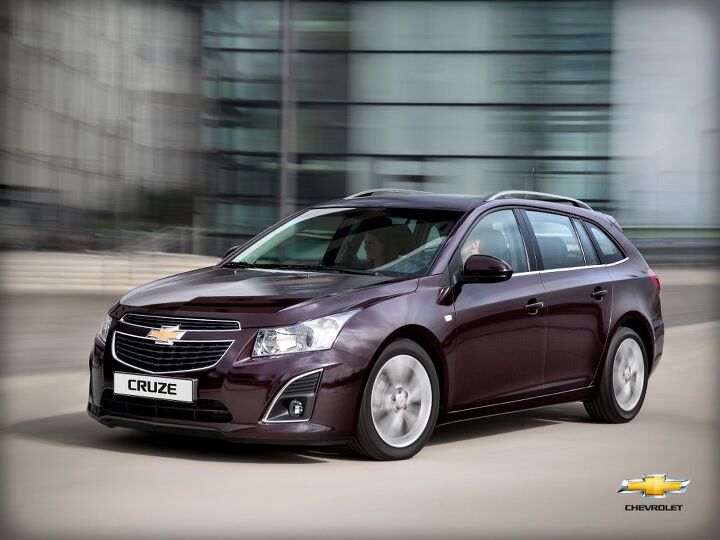

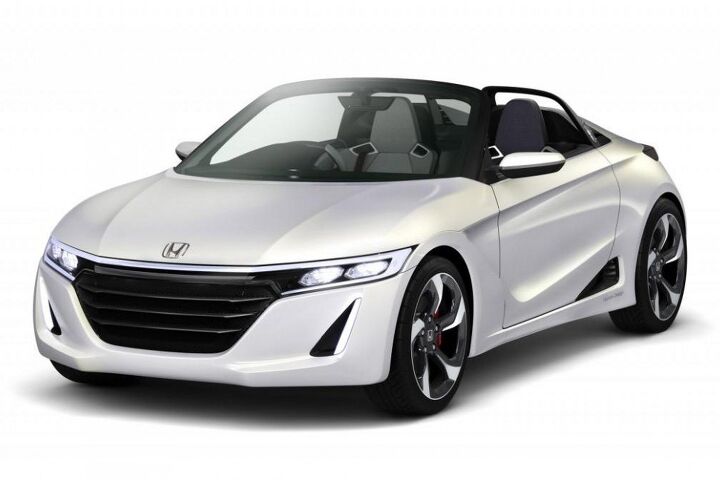
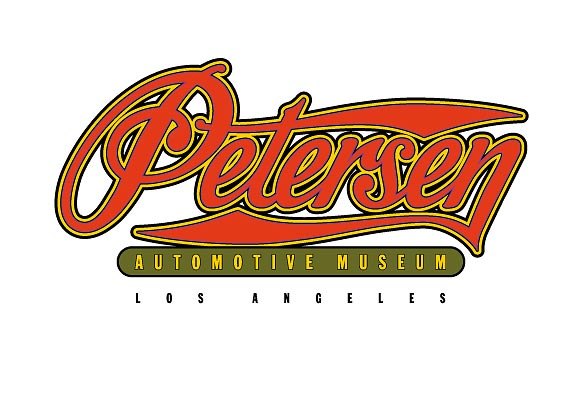




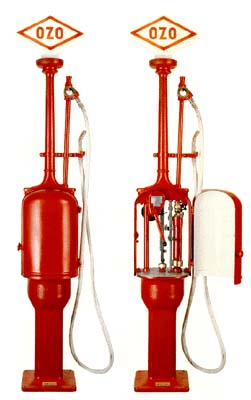
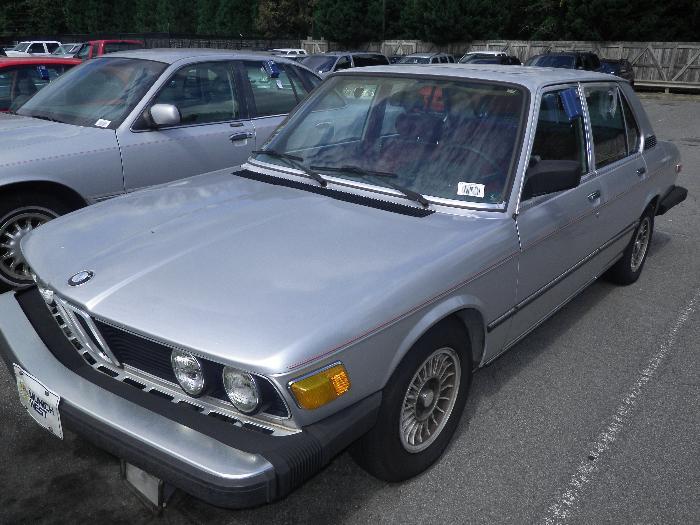

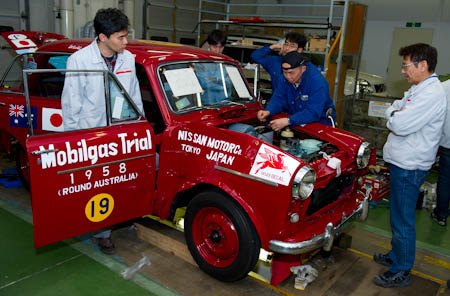
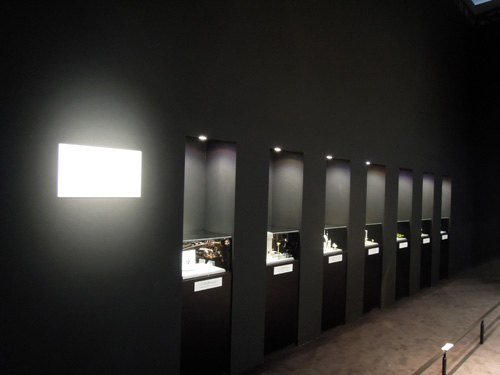




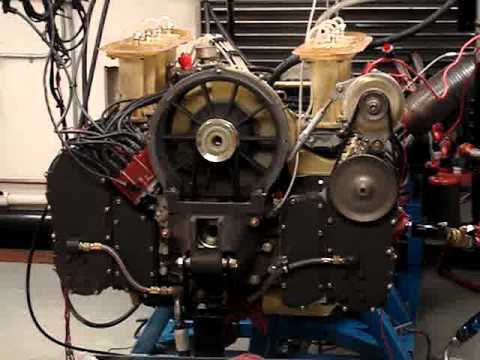
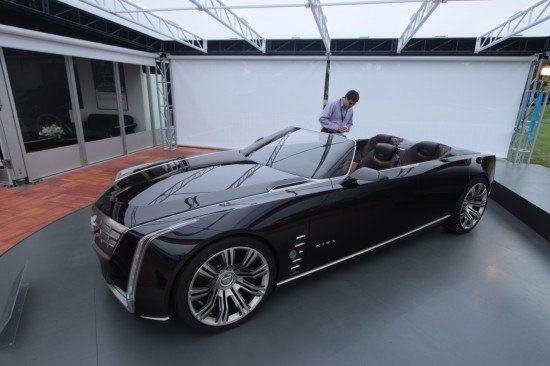

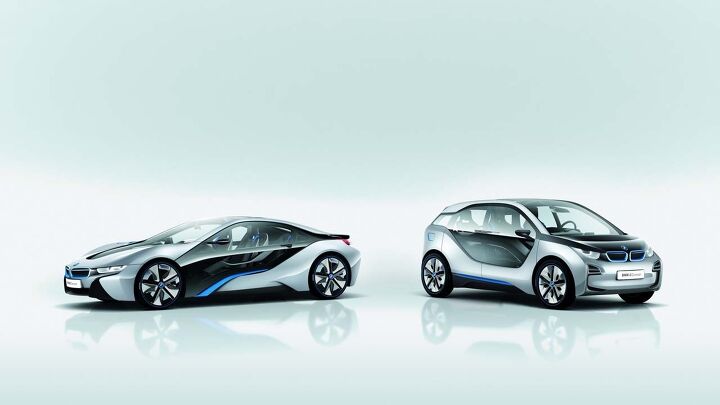



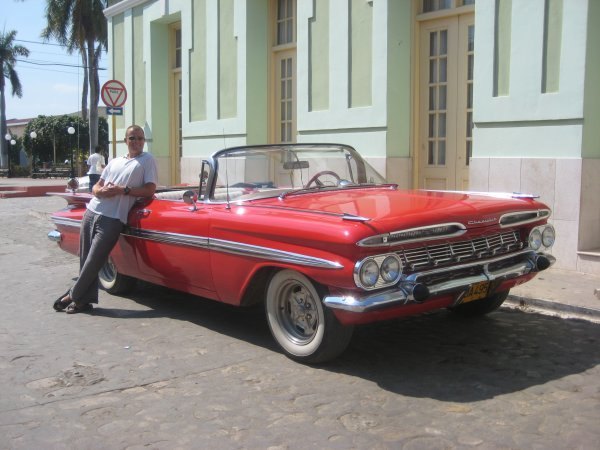




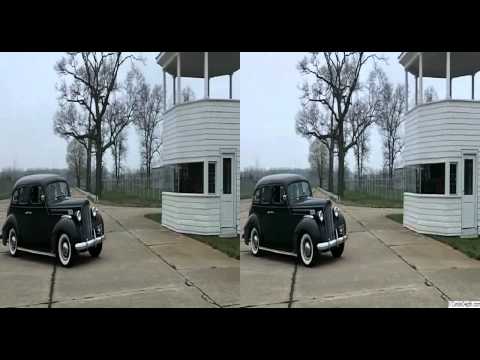



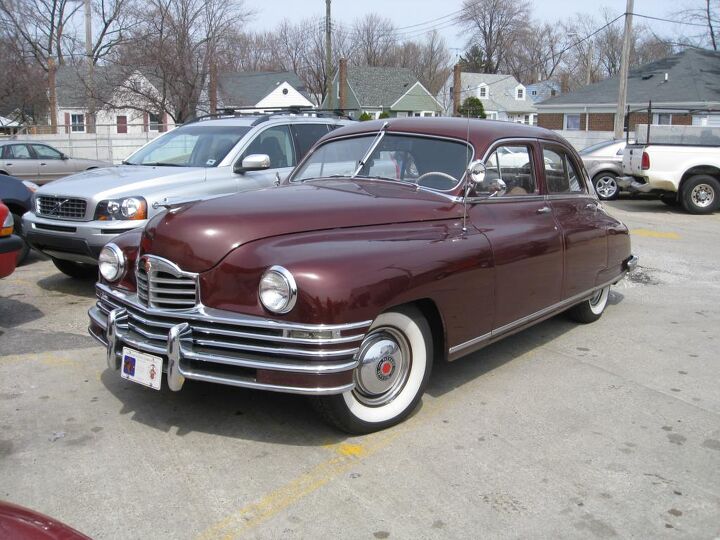

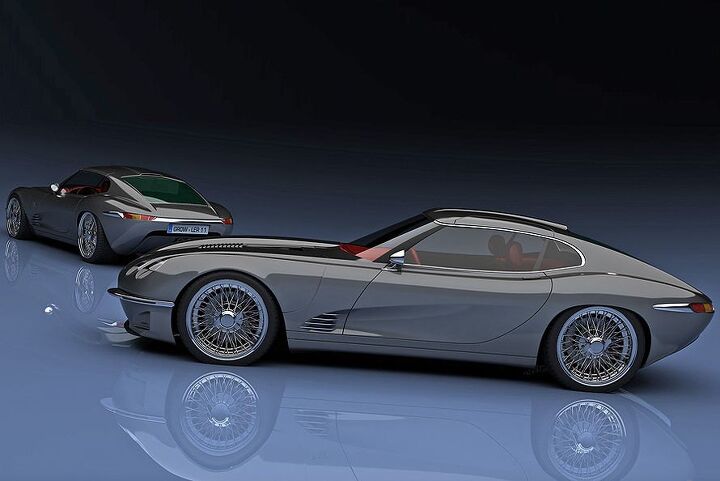
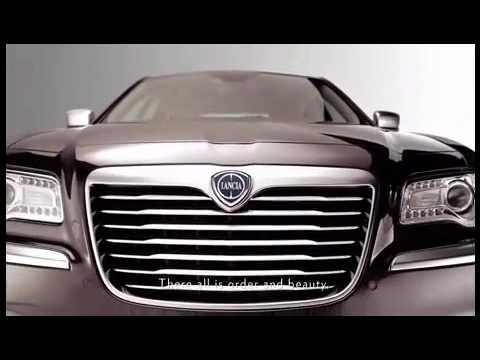


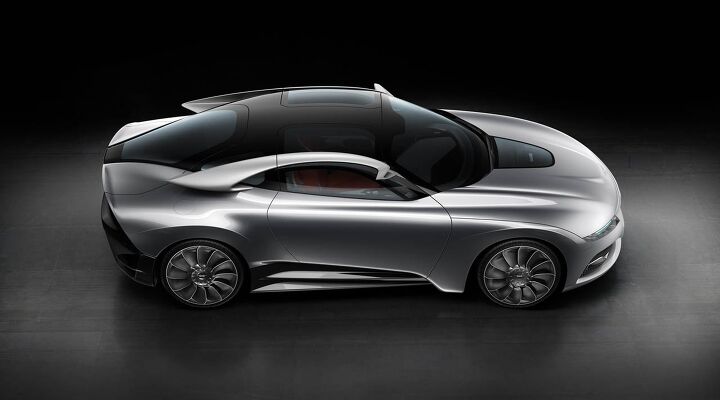

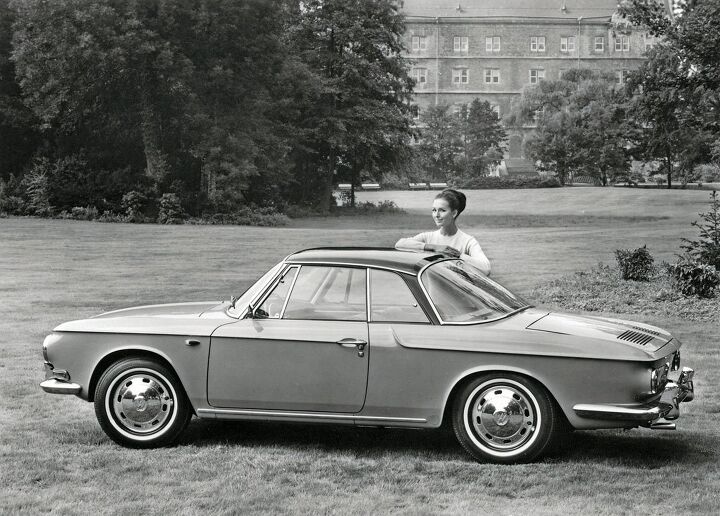












Recent Comments